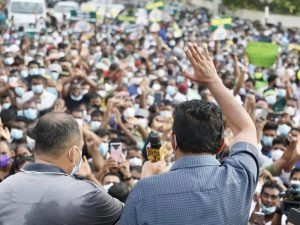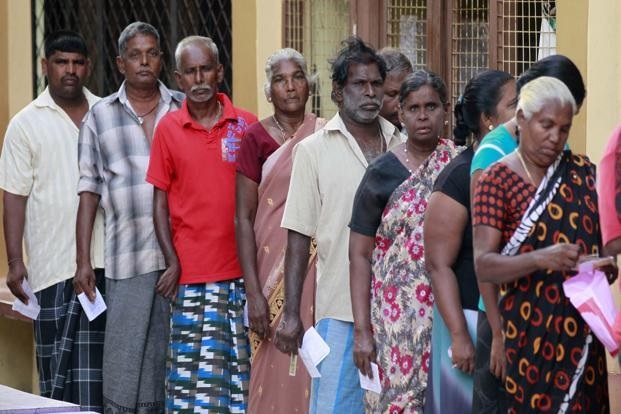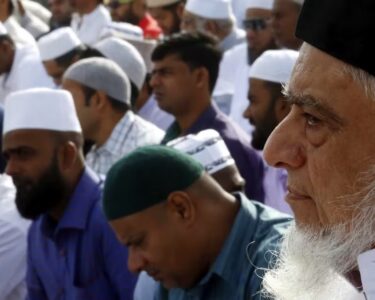Crowd Sizes at Sri Lankan Election Rallies: A Show of Strength or a Mirage?

As Sri Lanka’s presidential election campaign intensifies, the size of crowds at political rallies has become a hot topic on social media. The leading candidates—President Ranil Wickremesinghe, Opposition Leader Sajith Premadasa, and JVP/NPP leader Anura Kumara Dissanayake—boast of well-attended events that dominate headlines and seem to capture the nation’s attention. However, beneath the spectacle lies a murkier reality where crowd sizes may not be as organic as they appear.
The Spectacle of Crowds
In the run-up to the election, these candidates have spared no effort in attracting massive turnouts at their rallies. Buses packed with supporters from various parts of the country, strategically deployed to swell the ranks, are a common sight. Reports suggest that some parties even go as far as distributing artificially brewed toddy in plantation areas to entice workers to attend their events. This practice has sparked complaints and raised ethical concerns, but it persists, reflecting the importance placed on crowd sizes in Sri Lankan electoral politics.
The Curious Case of Sarath Fonseka
One of the most striking examples of the gap between past and present political appeal is the case of former Army Commander Field Marshal Sarath Fonseka. Once a formidable candidate in the 2010 presidential election, drawing massive crowds with the backing of the UNP and JVP, Fonseka now struggles to fill seats at his rallies. His current campaign events, although marked by fiery speeches, are poorly attended, a stark contrast to the throngs that gathered during his previous bid for the presidency. This dramatic decline in turnout underscores the fickle nature of political popularity and the critical importance of timing in political maneuvers.
Do Crowds Equal Votes?
The relationship between crowd size and electoral success is complex and often paradoxical. On one hand, large crowds can indicate strong popular support, boost the morale of candidates, and energize their campaigns. On the other, they can be misleading. Historical examples abound where impressive rally turnouts did not translate into electoral victories. In 1982, JVP leader Rohana Wijeweera drew huge crowds with his oratory skills but secured only 4.1% of the vote. Similarly, Fonseka’s massive rallies in 2010 did not prevent his defeat by Mahinda Rajapaksa.
However, there are instances where crowd sizes have been more predictive of election outcomes. In 1970, Sirimavo Bandaranaike’s well-attended rallies foreshadowed the United Front’s two-thirds majority victory. Similarly, the massive gatherings at UNP rallies in 1977 signaled the party’s impending landslide win. More recently, in 2019, Gotabaya Rajapaksa’s campaign drew significant crowds, and his subsequent electoral success seemed to confirm that momentum.
The Illusion of Popular Support
While large crowds can be an encouraging sign for candidates, they are not always a reliable barometer of electoral success. Political parties often employ tactics to inflate crowd sizes, creating a false impression of widespread support. In some cases, people attend multiple rallies or are transported to events to artificially boost numbers. This strategy can backfire if the perceived popularity fails to translate into votes, as seen in Fonseka’s 2010 campaign and Wijeweera’s ill-fated run in 1982.
As the 2024 presidential election approaches, the spectacle of crowds will continue to dominate the political landscape in Sri Lanka. But whether these gatherings are a true reflection of voter sentiment or merely a well-staged performance remains to be seen. What is clear is that in the theater of Sri Lankan politics, size does matter—but it is not the only factor that will determine who ultimately wins the race.







